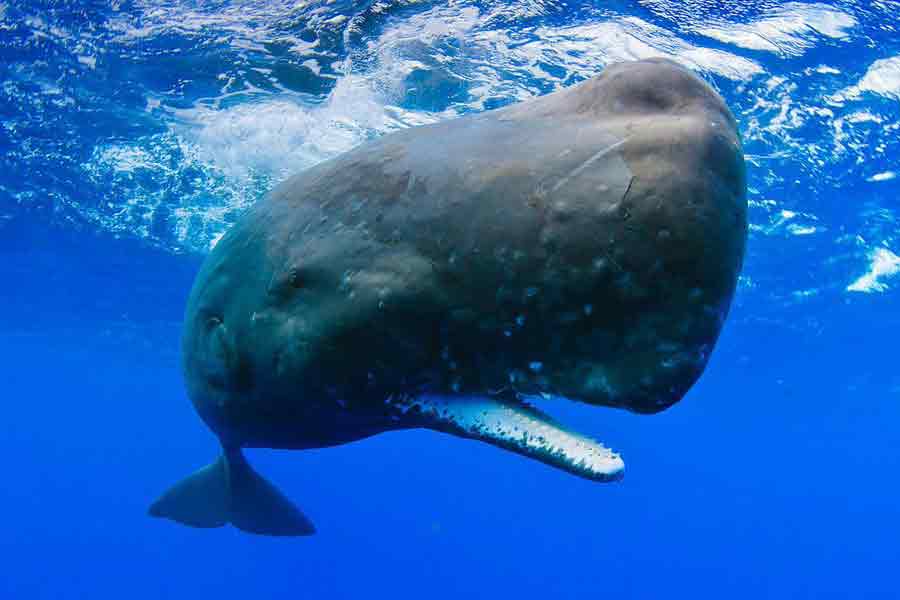
Between six and ten sperm whales die each year in the maritime corridor that separates the ports of Las Palmas and Santa Cruz in the Canary Islands. The local population of these individuals, which is around 350 specimens, chooses this corridor area for their deep-sea hunts. When they come up to breathe, they collide with ferries and cargo ships whose sharp keels often cause the death of the animal.
Sperm whales are the marine mammals that hunt at the greatest depths, in areas where sunlight does not reach, guided solely by their echolocation system, which involves emitting clicking sounds. The rebound of these sounds on the seafloor allows them to locate their prey in complete darkness. However, when they come to the surface, they cannot detect the vessels navigating on the surface. Analysis of the structure of their ears showed that they were unable to hear the low-frequency sounds produced by the boats. It is also logical to think that when ascending, sperm whales do not use their echolocation system since the surface should be «clear,» and they do not recognize the risk of colliding with the vessels.
Recently, French biologist Michel André, a specialist in cetacean bioacoustics, has developed the Whale Anti-Collision System (WACS), which consists of twelve buoys located ten kilometers apart. Each buoy is equipped with microphones and sensors capable of detecting the vocalizations of the sperm whales or the distortion they cause in the surrounding ambient noise. Once the position of these large cetaceans is obtained, it is transmitted to a ground station that alerts the vessels transiting through the marine corridor.
With the implementation of WACS, no more deaths of large mammals due to collisions will be lamented, and navigating in the area will be safer for both humans and sperm whales, who will have once again demonstrated that they can share the sea in harmony and avoid harming each other.
«You cannot defend what you do not love, and you cannot love what you do not know.»

